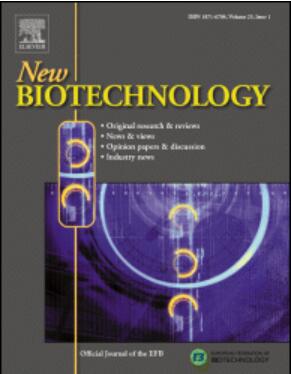Enhancement of glutathione production in Saccharomyces cerevisiae through inverse metabolic engineering
IF 4.9
2区 生物学
Q1 BIOCHEMICAL RESEARCH METHODS
引用次数: 0
Abstract
Glutathione is an important tripeptide with a variety of health-promoting effects. Currently, glutathione is produced industrially through a fermentation process using Saccharomyces cerevisiae with high glutathione content. However, the glutathione production yield and titer are relatively low compared to using bacteria as a host strain. The underlying reason for this limitation is that previous studies have mainly focused on gene targets directly related to glutathione production. To overcome this limitation, we aimed to identify novel gene targets capable of enhancing glutathione production in S. cerevisiae. To this end, the #ACR3–12 mutant, exhibiting 1.8-fold higher glutathione content than the wild-type D452–2 strain, was isolated after two rounds of acrolein resistance-mediated screening. Next, the genes responsible for the increased glutathione production were identified by analyzing mutations that occurred in the #ACR3–12 mutant. Notably, the SSD1 and YBL100W-B genes, which encode a translational repressor of cell wall protein synthesis and a Ty2 retrotransposon, respectively, played a crucial role in enhancing glutathione production efficiency. In particular, the D452–2 strain overexpressing the YBL100W-B gene exhibited 1.6- and 2.1-fold higher maximum dry cell weight and glutathione concentration than the wild-type D452–2 strain.
利用逆向代谢工程提高酿酒酵母谷胱甘肽产量。
谷胱甘肽是一种重要的三肽,具有多种促进健康的作用。目前,谷胱甘肽的工业生产是通过使用谷胱甘肽含量高的酿酒酵母发酵过程。然而,与使用细菌作为宿主菌株相比,谷胱甘肽的产量和滴度相对较低。这种限制的潜在原因是,以前的研究主要集中在与谷胱甘肽生产直接相关的基因靶点上。为了克服这一限制,我们旨在鉴定能够提高酿酒酵母谷胱甘肽生产的新基因靶点。为此,经过两轮丙烯醛抗性介导筛选,分离出谷胱甘肽含量比野生型D452-2高1.8倍的#ACR3-12突变体。接下来,通过分析#ACR3-12突变体中发生的突变,确定了负责增加谷胱甘肽产生的基因。值得注意的是,分别编码细胞壁蛋白合成翻译抑制因子和Ty2反转录转座子的SSD1和YBL100W-B基因在提高谷胱甘肽生产效率方面发挥了至关重要的作用。其中,过表达YBL100W-B基因的D452-2菌株的最大干细胞重和谷胱甘肽浓度分别比野生型D452-2菌株高1.6倍和2.1倍。
本文章由计算机程序翻译,如有差异,请以英文原文为准。
求助全文
约1分钟内获得全文
求助全文
来源期刊

New biotechnology
生物-生化研究方法
CiteScore
11.40
自引率
1.90%
发文量
77
审稿时长
1 months
期刊介绍:
New Biotechnology is the official journal of the European Federation of Biotechnology (EFB) and is published bimonthly. It covers both the science of biotechnology and its surrounding political, business and financial milieu. The journal publishes peer-reviewed basic research papers, authoritative reviews, feature articles and opinions in all areas of biotechnology. It reflects the full diversity of current biotechnology science, particularly those advances in research and practice that open opportunities for exploitation of knowledge, commercially or otherwise, together with news, discussion and comment on broader issues of general interest and concern. The outlook is fully international.
The scope of the journal includes the research, industrial and commercial aspects of biotechnology, in areas such as: Healthcare and Pharmaceuticals; Food and Agriculture; Biofuels; Genetic Engineering and Molecular Biology; Genomics and Synthetic Biology; Nanotechnology; Environment and Biodiversity; Biocatalysis; Bioremediation; Process engineering.
 求助内容:
求助内容: 应助结果提醒方式:
应助结果提醒方式:


